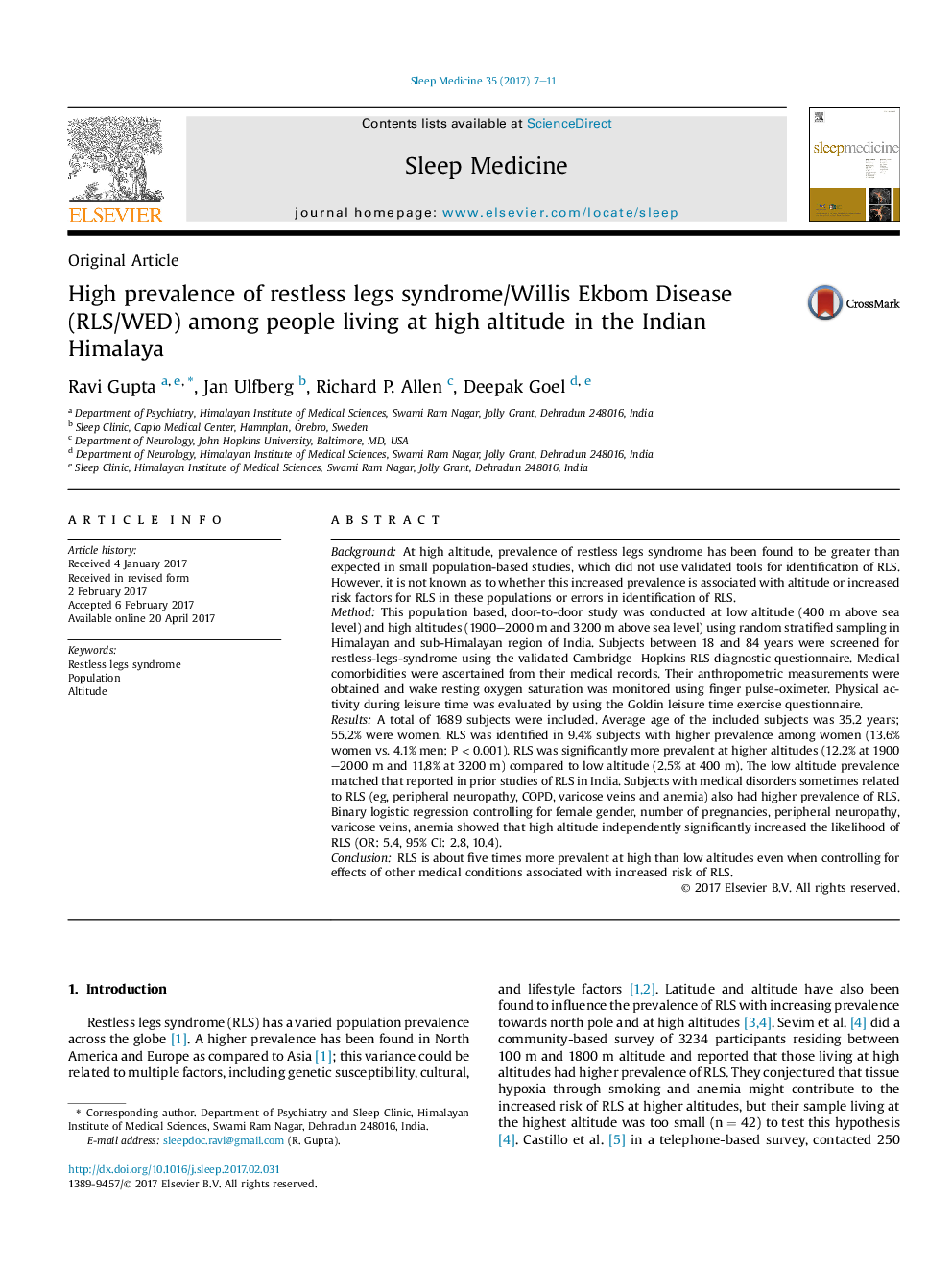| کد مقاله | کد نشریه | سال انتشار | مقاله انگلیسی | نسخه تمام متن |
|---|---|---|---|---|
| 5643601 | 1586474 | 2017 | 5 صفحه PDF | دانلود رایگان |

- RLS is more prevalent at high altitude compared to low altitude.
- Among all the factors, altitude has a major contribution in increasing the prevalence of RLS.
- Epigenetic factors seem to play a role in development of RLS at high altitude.
BackgroundAt high altitude, prevalence of restless legs syndrome has been found to be greater than expected in small population-based studies, which did not use validated tools for identification of RLS. However, it is not known as to whether this increased prevalence is associated with altitude or increased risk factors for RLS in these populations or errors in identification of RLS.MethodThis population based, door-to-door study was conducted at low altitude (400Â m above sea level) and high altitudes (1900-2000Â m and 3200Â m above sea level) using random stratified sampling in Himalayan and sub-Himalayan region of India. Subjects between 18 and 84 years were screened for restless-legs-syndrome using the validated Cambridge-Hopkins RLS diagnostic questionnaire. Medical comorbidities were ascertained from their medical records. Their anthropometric measurements were obtained and wake resting oxygen saturation was monitored using finger pulse-oximeter. Physical activity during leisure time was evaluated by using the Goldin leisure time exercise questionnaire.ResultsA total of 1689 subjects were included. Average age of the included subjects was 35.2 years; 55.2% were women. RLS was identified in 9.4% subjects with higher prevalence among women (13.6% women vs. 4.1% men; PÂ <Â 0.001). RLS was significantly more prevalent at higher altitudes (12.2% at 1900-2000Â m and 11.8% at 3200Â m) compared to low altitude (2.5% at 400Â m). The low altitude prevalence matched that reported in prior studies of RLS in India. Subjects with medical disorders sometimes related to RLS (eg, peripheral neuropathy, COPD, varicose veins and anemia) also had higher prevalence of RLS. Binary logistic regression controlling for female gender, number of pregnancies, peripheral neuropathy, varicose veins, anemia showed that high altitude independently significantly increased the likelihood of RLS (OR: 5.4, 95% CI: 2.8, 10.4).ConclusionRLS is about five times more prevalent at high than low altitudes even when controlling for effects of other medical conditions associated with increased risk of RLS.
Journal: Sleep Medicine - Volume 35, July 2017, Pages 7-11